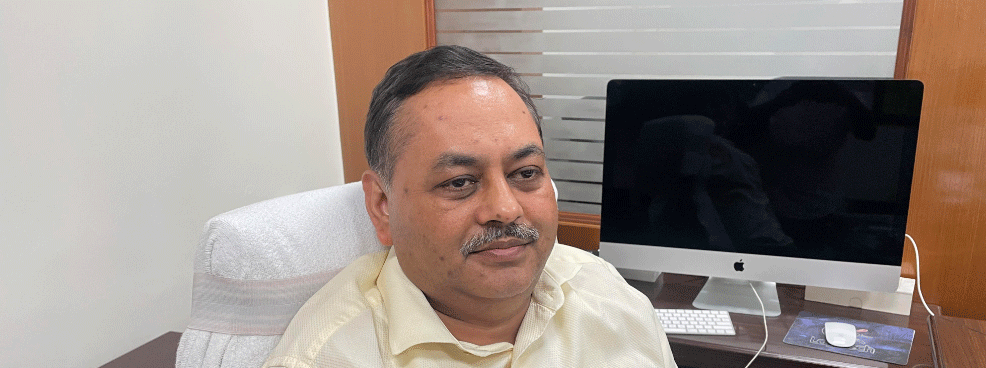Bhubaneswar: After touching the milestone of providing tap water supply to more than 50 lakh households in the State, Odisha government has ensured tap water connection to each household in 8850 villages across the State under Jal Jeevan Mission(JJM).
Sushil Kumar Lohani, Principal Secretary Panchayati Raj and Drinking Water took stock of Tap Water Program. As per data available on the Jal Jeevan Mission (JJM) dashboard, 8850 villages of the State reported 100 percent tap water supply connection. Thus, all these villages have become ‘Har Ghar Jal’.
Highest 990 villages of mineral-rich Kendujhar district have 100 tap water connections, followed by Bhadrak (781 villages), Mayurbhanj (714), Boudh (565) and Ganjam (500). The bottom five districts in the list are—Jharsuguda (41 villages), Jagatsinghpur (74), Malkangiri (78), Nabarangpur (93) and Kendrapara (119).
Similarly, 422 Gram Panchayats in the State have reported tap water supply connections to all households. However, not a single village has been certified to have 100 tap water connection till now.
On the other hand, over 53.15 lakh households in Odisha have been provided with tap water connections under different schemes including the Jal Jeevan Mission (JJM).
Out of 88,60,078 households, piped water connection has been ensured for 53,15,033 households, which is 59.99 per cent.
Odisha has performed better than a few major States like Uttar Pradesh, Madhya Pradesh, Rajasthan, Jharkhand, Chhattisgarh, West Bengal and Kerala.
The data available in the JJM dashboard shows that Nuapada tops the district list in the State where over 97.68 percent of households have a tap water supply. Nuapada remaining at the top position assumes significance when the district has the most blocks under the contamination category, officials said.
As many as 21 districts in the State now have tap water connections to half of their households. The districts other than Nuapada are Keonjhar (94.67 per cent), Bhadrak (83.71 per cent), Boudh (79.67 pc), Deogarh (75.58 pc), Dhenkanal (74.72 pc), Jharsuguda (73.58 pc), Kendrapara (67.78 pc), Nabarangpur (65.28 pc), Khorda (64.72 pc), Angul (64.63 pc), Bargarh (63.46 pc), Balasore (62.92 pc), Ganjam (62.14 pc), Puri (61.96), Jajpur (61.57 pc), Sonepur (59.85 pc), Sundergarh (59.67 pc), Cuttack (55.35 pc), Kalahandi (52.41 pc) and Rayagada (50.61 pc).
Tribal dominated Malkangiri district has remained bottom of the list with coverage of only 35.10 per cent of the total households so far.
Malkangiri was preceded by Bolangir with 38.49 per cent and Sambalpur with 41.65 per cent coverage.
The other districts those were recorded below 50 per cent water supply coverage are—Jagatsinghpur—49.85 per cent, Koraput—49.52 per cent, Nayagarh—47.27 per cent, Gajapati—46.06 per cent, Kandhamal—43.67 per cent and Mayurbhanj—42.78 per cent.
An amount of Rs 4096.31 crore has been utilised under the JMM during last financial year.
During the current financial year (2022-23), the State Government has made budgetary provision of Rs.13,215 crore during the year 2023-24 for piped drinking water in rural areas from budget and off-budget sources.
This includes Rs.4,750 crore under Basudha scheme, Rs.5,750 crore under Jal Jeevan Mission, and Rs.269 crore for operation and maintenance of the water supply system, Finance Minister Niranjan Pujari had stated in his budget speech.
All 691 directly affected villages in 8 mineral-bearing districts will be covered under piped water supply with an estimated cost of Rs.2127 crore under OMBADC funds and Rs.588 crore under DMF, he had announced.
About 207 Mega Piped Water Supply Projects worth Rs.36,455 crore have already been executed in the state.
“We have embarked upon a plan to increase the coverage of piped water supply and safe drinking water to all the rural households by the end of 2024 and all out efforts are being made to achieve the target within the stipulated time,” Shri Pujari had said.


